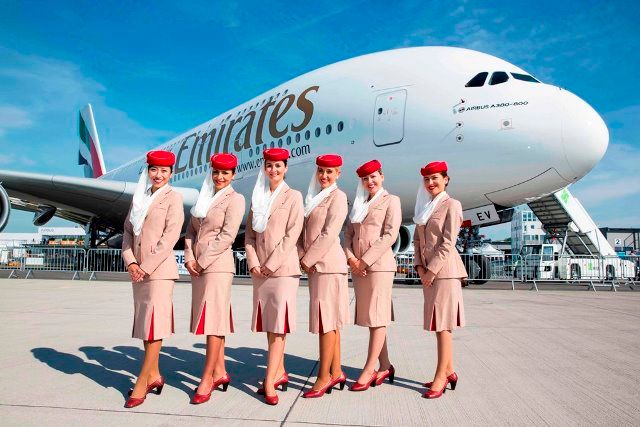For the last 25 years, Emirates’ unwavering commitment to the Dubai-Manila route has been a catalyst for growth in the UAE-Philippine bilateral trade and tourism to the Philippines.
In light of recent media coverage about the local carriers’ point of view on the Philippines renewed air talks with the UAE, Emirates’ response is as follows:
Since the removal of the third daily flight, Emirates’ two daily flights on the Dubai-Manila route have been operating at 100% capacity in economy class – with no seats left for international tourists and Overseas Filipino Workers (OFWs). This represents a significant gap between short supply and huge demand for seats.
Customer demand on the Dubai-Manila route remains extremely high throughout the year. The factors that contribute to this include the large number of OFWs that work in the United Arab Emirates (UAE) and the increasing number of tourists to the Philippines which is a result of the Philippine government’s “Visit the Philippines Year” declaration for 2015.
The objective of the “Visit the Philippines Year” campaign is to attract more high-value foreign tourists to the country. Emirates and its home, Dubai, are best positioned to help leverage this campaign to ensure its success.
Emirates and Dubai airport, provide travellers with immediate and convenient connections between major international markets not served by the Filipino carriers and the Philippines, along with increased travel options for inbound tourism. This includes enhanced destination choices, and easy accessibility to Emirates’ global network for visitors travelling to and from the Philippines.
But with limited seats for OFWs alone, there is no capacity available for tourists who want to visit the Philippines.
Tourists from the UAE are identified high spenders who patronise high-end hotels and stay in the country for eight to 10 days on average. The current scarcity of seats combined with reduced non-stop travel options have, unfortunately, become a barrier to Philippine tourism.
The number of Filipino workers in Dubai and the UAE continues to increase. The UAE remains the most preferred country in the Middle East and the Gulf Cooperation Council (GCC) for employment for Filipinos. Currently, there are approximately 850,000 Filipinos residing in Dubai. The upcoming Expo 2020 Dubai is also expected to generate more than 275,000 new jobs in the hospitality, IT, engineering and medical services sectors, offering more opportunities for Filipinos. This ever-increasing OFW passenger traffic is consistently ascending, thus creating exceptionally strong demand for seats on the route.
With increased seat demand from OFWs and international tourists, Emirates is also witnessing an increased demand for more direct flights. Regions like the Middle East, Africa, South America and many parts of Europe are significantly underserved to and from the Philippines. This limitation is a major impediment to attracting more business and leisure visitors to the Philippines. Travel options for millions of Filipinos residing overseas are also limited. Emirates’ extensive network from Dubai provides the solution to this problem.
Lastly, the reduction of Emirates’ flights between Manila and Dubai is affecting Philippine exports. Emirates’ cargo capacity has been reduced by 18,000 kg on the Manila-Dubai route every day. With this acute shortage in cargo capacity, cost for cargo transportation has also escalated. This combination of reduced air cargo capacity and higher rates could negatively impact Philippine exports, which is detrimental to the efforts Emirates and the Philippine government have worked for in the last 25 years.
With all this taken into consideration, the restoration of Emirates’ third daily flight is essential to preventing serious negative disruptions to OFWs, tourists and exporters via a dramatic drop in seats and cargo space.
